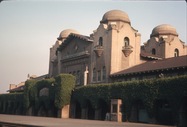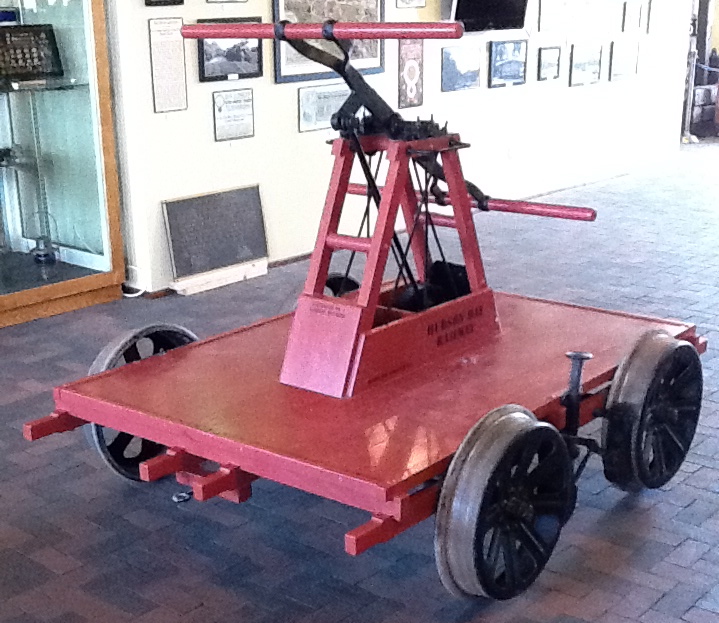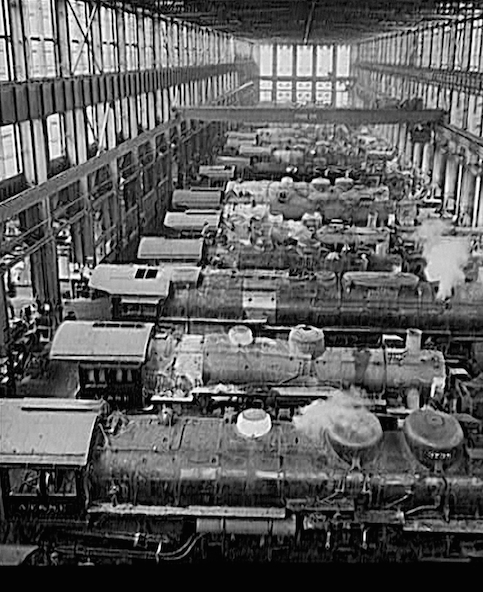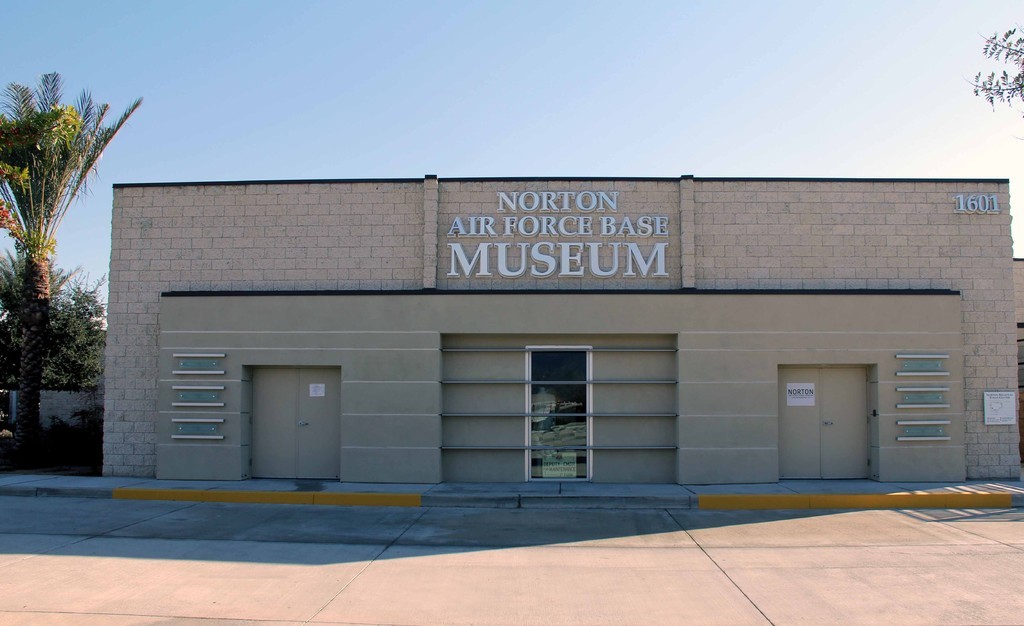Santa Fe Depot History:
San Bernardino Railroad History
In 1875, the Southern Pacific Railroad came into the area. Eleven years later, the Santa Fe Railroad arrived in the area and San Bernardino became Santa Fe's "gateway" to Southern California. For more than a century the railroad industry has been a major contributor to the San Bernardino economy. The first permanent depot was a wooden structure built in 1886. It was destroyed by fire at 11:00 P.M. on November 16,1916.
(Courtesy of the San Bernardino Historical and Pioneer Society)
The New (1918) Santa Fe Depot
Construction soon began on a new $800,000 depot featuring mission-style architecture with domes, towers, and a tile roof. Opening on July 15, 1918, the new depot would be a "monument to the Santa Fe and the town the railroad built." The San Bernardino Daily Sun declared, "Santa Fe's new station to be the finest in the West." The paper gave "Credit to San Bernardino showing importance of the Gate City as a transportation center."
(Courtesy of the San Bernardino Historical and Pioneer Society)
The new depot (including roundhouse, shops, etc.) was the largest west of the Mississippi. Lofty beams and recessed ceiling panels are decorated with fancy touches like the florets around the milky white fixtures. Everything was handcrafted for this specific job. It was known for being marvelously clean and neat (not like many of the eastern railroad stations). The tiled floors and walls were polished regularly.
West End - baggage rooms, superintendent's office, mailroom, telegraph office & western union.
Upstairs - division engineer's office. The "onion domes" were always empty rooms, just for looks (and pigeons).
3rd Street side - first three bays were credit union and dispatcher's office.
East End - The Harvey House--From the 1880's through the 1930's, Harvey House Restaurants flourished along the Atchison, Topeka, and Santa Fe Railway. The waitresses (Harvey Girls) wore neatly pressed and heavily starched black uniforms with crisp white cuffs, white bibbed aprons, and starched white caps. The Harvey Girls served hot meals, sandwiches, bakery goods, and good strong coffee to the weary travelers. The Harvey House was opened in 1921 and closed in the 1950's. Meals were served at half-hour food stops along the Santa Fe routes on marble-top tables and a big horseshoe shaped counter. Chicken potpie was 75 cents.
San Bernardino Depot's Heyday
The busiest period of passenger train travel was the mid-1920's to mid-1950's in the days before automobile dominance and popularity of air travel. A Santa Fe timetable dated June 12,1938, lists 13 eastbound and 13 westbound trains per day departing from the depot every 2 hours or so, with a few hours breaks during the morning. The trains bore colorful Southwest-flavored names: El Capitan, the Navajo, the Scout, the Grand Canyon Limited, the Chief, and the limousine of sleeping cars favored by Hollywood movie stars, the Super Chief.
During the war years, there were also troop trains and travelers would frequently see "standing room only" full of soldiers inside the depot. Restaurants, bars, boarding houses, and small businesses all thrived in the area. The Cave Cafe, Pirate's Den, Eichenberg's cafe, and hotels like the Planet, the St. Augustine, the Maryland, and the Travelers were close by. Everyone from presidents to fruit packers passed through the depot.
Demise of the Depot
The new diesel locomotives needed smaller work crews. The 1960's saw the beginning of the gradual slowdown as the rail industry began downsizing. Santa Fe turned its passenger travel over to Amtrak in 1972. In 1992, the Santa Fe transferred most of its workers to Topeka, Kansas and moved many switching operations to Barstow. The focus now is strictly on freight service.
Restoration of the Depot
In 1992, San Bernardino Associated Governments (SANBAG) acquired the depot and property from the railway as part of a larger property acquisition in preparation for Metrolink commuter rail service (which began operation in October 1992). The depot itself still was not fully functional.
In the mid-1990's, however, SANBAG and the City of San Bernardino began to work together to bring the 57,000 square foot depot back to life. They secured the $15 million (from a combination of federal and state grants and local money) necessary to complete restoration of the depot.
Architect Milford Wayne Donaldson was chosen to develop the final design for the depot. Solteck Pacific was hired as the construction contractor and Transtech Engineers was named as the construction management firm.
Work began in November 2002. The restoration work included historically accurate renovations of the interior and exterior, installation of utilities, seismic retrofitting and asbestos removal.

(Photo by Ruth Parish)
The project was completed in June of 2004. After dedication ceremonies, SANBAG began occupying the building on June 21, 2004. Today, the restored depot serves Amtrak and Metrolink passengers and houses the offices of Metrolink and SANBAG. It is also home to the San Bernardino History and Railroad Museum.
________________









